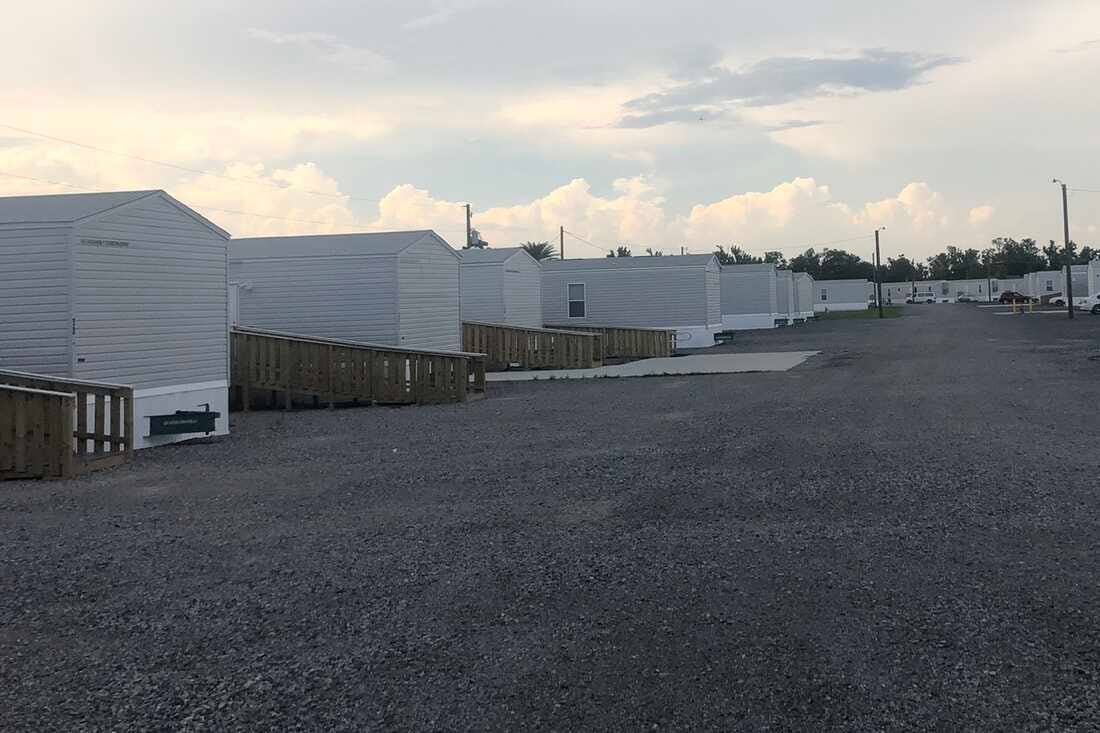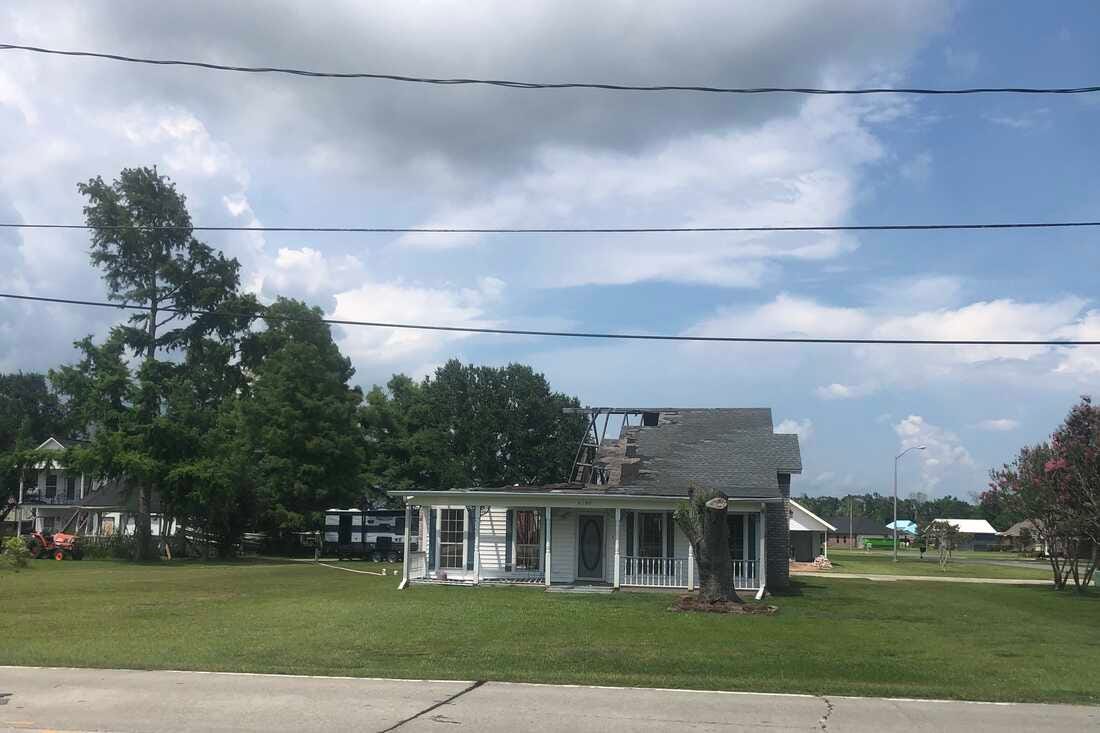Struggling to see what is right in front of us
Climate change is transforming America, can we see it for what it is?

“To see what is in front of one's nose needs a constant struggle.”
-George Orwell
—
Early on in the movie The Big Short, hedge fund manager Michael Burry asks Goldman Sachs executives to create bespoke securities for him so he can short mortgage-backed bonds. The bankers are puzzled.
Goldman banker: You want to bet against the housing market?
Michael Burry: Yes. Why?
Goldman banker: Those bonds only fail if millions of Americans don’t pay their mortgages. That’s never happened in history. If you’ll excuse me, Dr. Burry, it seems like a foolish investment. (Emphasis added)
Famously, Burry turned out to be right. His bet that the future would deviate significantly from the past grew his hedge fund’s assets from $550 million to more than $3 billion in just a few years, while those who bought mortgage-backed bonds suffered deep, painful losses.
—
The most interesting lesson of the housing market crash is this: it is difficult to see change coming when it represents a discontinuity with the past. This difficulty is so great, in fact, that despite indicators like rising mortgage default rates, and despite strong financial incentives to see the market objectively, most investors failed to see the housing crash coming. They failed in large part because what happened didn’t fit in their mental model of how the world works.
Climate change has this in common with the 2007-2009 housing crash. Both are discontinuous changes, fundamental breaks with the way things previously worked. That climate change is an immense discontinuity makes it challenging to see the destruction caused by global heating-intensified extreme weather events for what it really is. Even for those of us who know climate change is happening, understand its causes, and know its general trajectory, it is still hard to wrap our minds around the immense, sweeping implications of what’s coming.
This is true even as climate change is wreaking havoc in front of our noses on a regular basis.1 The starkest case is unfolding in Southern Louisiana. NPR recently reported from the town of Houma, which was hit hard by Hurricane Ida in 2021:
The scars from last year's Hurricane Ida seem fresh – a strip mall grocery store is abandoned, its glass front knocked out; signposts and gas station awnings are ripped away; faded blue tarps cover buildings.
"The downtown area really took a beating," says Jonathan Foret, executive director of the South Louisiana Wetlands Discovery Center in Houma, a town of about 30,000 southwest of New Orleans. He points to boarded up historic storefronts and missing roofs.
Foret is surveying the lingering damage on a drive to see his insurance agent. He's among tens of thousands of Louisiana homeowners scrambling to find new property insurance in the midst of a new Atlantic hurricane season. Most major companies have quit covering the coast, and now smaller firms are going under after Louisiana was hit with two major hurricanes in the last two years.
So not only was Houma heavily damaged by Ida, but the statewide hurricane devastation in recent years was so widespread it drove 7 insurance companies into bankruptcy. This prompted six more insurers to pull out of Louisiana, and more than 50 others to stop writing home insurance policies below interstates 10 and 12. This more vulnerable southern part of the state includes New Orleans, and Baton Rouge and Lafayette are right on the border (meaning I-10 runs through both cities).
—
Let’s briefly take stock of where things stand in Houma:
Much of the extensive damage to the town’s built environment is yet to be repaired, with falling down buildings, boarded-up storefronts, and tarps where roofs should be.
The lingering damage is becoming increasingly depressing.
The state insurance market is collapsing, at least below I-10 (where Houma is located), due to more frequent, climate change-intensified hurricanes. Recent destructive storms so depleted insurers’ financial reserves that Ida caused 7 insurer insolvencies.
Other insurance firms, seeing growing risks they can no longer accurately model and price, are exiting Louisiana entirely before they too wind up insolvent. Of those that remain, many have stopped insuring homes in the region that is the spiritual heart of the state.
Insurance claims are partly guaranteed by the state, but the amounts are capped and payouts are contingent on the state insurance emergency fund remaining solvent. Many will end worse off than before Hurricane Ida.
Finally, as I detailed in Climate change and housing bubbles, as home insurance premiums increase, home values decrease – often by a lot.2 This has already happened in Houma, and the loss of value will continue.
To gauge where this is all going, we have to zero-in on two all-but-irresolvable challenges facing Houma, Louisiana, and other climate vulnerable communities.
First, when a place gets hit hard enough by a climate-intensified destructive weather event – storm, wildfire, severe drought, or otherwise – the devastation becomes hard to bounce back from. Some combination of the extent of the damage, missing insurance payouts, delayed federal emergency funds, too few local builders, collapsed property values, and an exodus of residents who sense the community’s future is bleak conspire to impede full recovery. And the longer a community remains stuck in this liminal wounded condition, the more people leave, the more hope fades, and the more difficult full recovery becomes.
Second, climate change is relentless. In the years ahead, hurricanes will only grow stronger, the ocean will only creep closer, and home insurance (if it is available at all, and it may not be), will grow ever more expensive. At some point soon, home insurance premiums in climate vulnerable places will make living there financially unviable. Importantly, there’s no insurance regulation or other policy tweak that can solve this problem because it’s a reflection of the actual increased risk of living there, which climate change will continue to drive higher.
—
Jonathan Foret, the Houma nonprofit executive director whose damaged kitchen roof is still covered with a tarp nearly a year after Hurricane Ida, described to NPR what this reality feels like to live with.
Foret says the insurance shakeup just exacerbates an already slow-going disaster recovery.
"It's actually had more of a compounding effect of driving by those things and seeing them broken and destroyed every day," he says. "It's become more depressing than I thought it would be."
I’m not surprised this what it feels like. I suspect people are aware at some instinctive level that the town is slowly dying, despite the fact that on the surface it’s still partly functioning. Something precious has already been lost, though not yet the thing itself, at least not entirely.3
Alex Kolker, a Louisiana-based scholar studying coastal systems, is clear-eyed about what climate change-intensified extreme weather means for vulnerable communities.
"I think it makes these areas much, much harder to live in and harder to have the kind of community where people would want to live," Kolker says. "So I think you look at the possibility of climate migration and people moving elsewhere."
What’s happening in Houma, in other words, is the same thing that’s likely happening in Rainelle, West Virginia: a reverse network effects downward spiral. When weather disasters cause enough damage, people begin to leave, and the first ones to go tend to be those with the most resources and options. Each departure makes the community a notch less viable for businesses and less attractive for potential newcomers, and once a population outflow begins it’s hard to stop. The net result will be:
A dying community with a partially destroyed built environment.
Inhabited primarily4 by people with limited options and insufficient resources.
Suffering from the compounding ailments of concentrated poverty.
I’ve been calling the dynamics of declining climate vulnerable communities a downward spiral, but in the spirit of seeking greater clarity and comprehension we should call it what it really is, a death spiral. In the coming years, cities and towns in climate vulnerable locations that can no longer support stable communities will slowly decline and, eventually, die.
This is devastatingly sad. It is also reality, one we need to recognize and understand. Understanding means both examining the impacts of climate-fueled weather disasters on vulnerable places and, critically, exploring the ripple effects, collateral damage, and system disruptions that may flow from the decline and death of communities.5
—
Failing to understand discontinuities compounds their inherent risks, as investors and everyone else learned the hard way in the housing market crash. The inverse is also true, as Michael Burry showed: considerable advantages accrue to those able to see early and understand more fully the big structural transformations that are underway.
But what kind of advantages? How exactly can communities, companies, nonprofits, and families benefit from comprehending the discontinuity we’re living through? And what hangs in the balance if they fail to understand? These are among the most important strategic questions in the world today, and will remain so for some time.
Notes
https://www.npr.org/2022/07/27/1113639292/insurances-woes-in-coastal-louisiana-make-hurricane-recovery-difficult
https://www.fox8live.com/2022/07/16/42000-louisiana-homeowners-dropped-by-insurance-company-friday-state-insurance-commissioner-addresses-crisis/
Including destructive, record-shattering flooding in St. Louis and eastern Kentucky just this week.
Excerpt from Climate change and housing bubbles: Let’s say Person A buys Home A and Person B buys Home B, both for the asking price of $750,000. They both put down 20% ($150,000) and both borrow the remaining $600,000 at a fixed interest rate of 3.5% over 30 years. Both pay $1,000 per month in property taxes and $300 per month for homeowners insurance, so both have the same total monthly payment amount:
Mortgage payment: $2,694 ($600,000, 3.5% fixed, 30 years)
Property taxes: $1,000
Homeowners insurance: $300
Total: $3,994 per month
This number, $3,994 per month, represents what Homes A and B are worth; it’s the $750,000 sale price translated into a monthly amount. The market value for both Home A and Home B is $3,994 per month, and given tax and insurance payments of $1,300 per month, that leaves $2,694 for the mortgage payment.
Now let’s say the provider of insurance for Home A does a new risk assessment and determines the home insurance premiums don’t reflect the actual risk to the home. To bring the premiums in line with the risk, the insurance company raises Person A’s rates from $300 per month to $1,000 per month.
…We established Home A is worth $3,994 per month. When Person A bought Home A, only $1,300 of the total amount was taxes and insurance, but now taxes and insurance have increased to $2,000. That means the mortgage can now only be $1,994, rather than $2,694, in order to stay at the established fair market value of $3,994 per month. If we assume the next buyer of Home A will also put down 20% and take a 30-year mortgage for the rest at 3.5%, how large a mortgage can the next buyer take out and still end up with an all-in cost of $3,994 per month?
The answer, via this spreadsheet model, is $444,054. Borrowing $444,054 at a rate of 3.5% fixed over 30 years comes to a monthly payment of $1,994. Adding the 20% down payment to the mortgage amount gives us the new fair market value sale price of Home A: $555,067.
Thus, when Home A’s home insurance premium increased from $300 per month to $1,000 per month, the value of Home A fell by $195,000, from $750,000 to $555,067.
I would guess people experience this kind of disaster, where the physical devastation lingers, as a kind of ambiguous loss.”
Perhaps not entirely, some residents who could leave may choose to stay simply because Houma is home.
For example, we already have a housing shortage in the U.S., and this process will exacerbate it.




